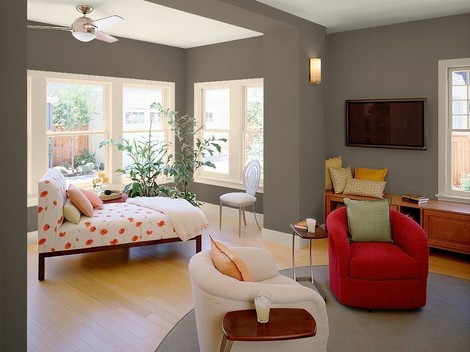
1. Don’t pick paint colors at the paint store—go to the paint store without any preconceived color ideas. Select a wide variety of color samples to consider from the store selector and take them to the room being painted.
2. Look around your room for existing elements like carpet or furniture. Their color will play a part in the color-making decision.
3. Place your color samples on or near the existing elements in the room to be painted. At this point, you should see immediately any colors that will not work in your space and eliminate them.
4. Of the remaining colors, consider those you love and those you didn’t know you loved—a surprise color might be just right for your space.
5. A pleasing color scheme will include a blend of warm and cool colors—a color wheel is an invaluable tool. Use it to help find colors that work well with your existing elements. Most color wheels offer helpful hints for putting schemes together. Even if you are only using one paint color in your room, the colors of other items in the room will create a color scheme.
6. Ask yourself what mood you want to convey in the area being painted. A quiet workspace might need the tranquil feeling created by cooler colors like blues and greens. Gathering places might want to feel a little livelier. Warm colors like reds and oranges tend to add excitement to an environment.
7. Heavily saturated colors make great accents, the smaller their use the better. For an overall color, look for more neutralized colors. For example, if you have a desire for a yellow room, the perfect yellow might not be yellow at all, but a neutral with yellow undertones.
8. Colors intensify when applied en mass. Selecting a color slightly lighter than your first choice is suggested.
9. Be aware of available lighting—color will look different in varying light sources. Color viewed in natural light during the day changes once a light is turned on. Old style “cool” fluorescent lights tend to wash out colors. Color in a room with “warm” incandescent light appears more natural. A more energy efficient choice is the newer compact fluorescent light bulbs (CFLs). They are now available in a variety of color temperatures, with a 3500K being the most pleasing—not too cool or too warm and reveal colors very accurately.
10. Don’t be afraid to use color—it will enrich your space. It can also be changed relatively easily when you have a desire to explore a new area.
For more information on choosing paint, visit http://www.kellymoore.com/.
